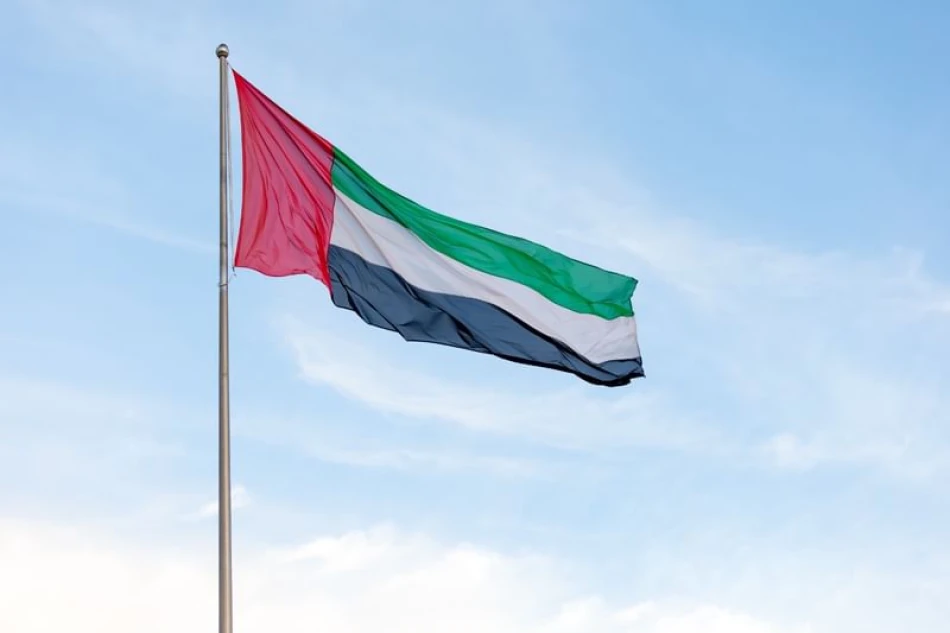
UAE Celebrates Global Humanitarian Action Day: Empowering Compassion Worldwide
UAE Emerges as Global Humanitarian Superpower, Delivering Aid to Over One Billion People
As the world marks International Humanitarian Day, the United Arab Emirates has cemented its position as a cornerstone of global humanitarian assistance, reaching over one billion beneficiaries with aid worth more than 368 billion dirhams ($100 billion) by mid-2024. The Gulf nation's systematic approach to crisis response is reshaping international humanitarian architecture, from Gaza's war zones to Ukraine's refugee camps.
Scale That Rivals Nations Ten Times Its Size
The UAE's humanitarian footprint defies conventional expectations for a country of just 10 million people. With aid reaching over one billion individuals globally, the Emirates has achieved per-capita giving levels that surpass traditional donor nations. This represents a fundamental shift in humanitarian leadership from Western powers to Gulf states flush with energy revenues and strategic ambitions.
The numbers reveal a state-level commitment rarely seen outside of crisis situations. At 368 billion dirhams, the UAE's humanitarian spending approaches the GDP of smaller European nations, suggesting humanitarian aid has become a core pillar of Emirati foreign policy rather than peripheral charity work.
Gaza Operations Showcase Rapid Response Capabilities
Dominating International Relief Efforts
The UAE's response to the Gaza crisis demonstrates how smaller nations can outmaneuver larger powers through operational efficiency. Contributing 44% of all international aid to Gaza according to UN reports, the Emirates has effectively become the primary lifeline for the territory's 2.3 million residents.
Operation "Noble Knight 3" has delivered aid through land, sea, and air corridors—a logistical achievement that highlights the UAE's investment in humanitarian infrastructure. The 73 airdrops under the "Birds of Goodness" initiative, delivering nearly 4,000 tons of supplies, represent one of the largest sustained aerial humanitarian operations in recent memory.
Strategic Infrastructure Investment
Beyond emergency relief, the UAE's focus on water infrastructure and healthcare systems in Gaza signals a long-term commitment that extends beyond immediate crisis response. This approach mirrors successful post-conflict reconstruction efforts in other regions, suggesting the Emirates views humanitarian aid as nation-building rather than temporary relief.
Multi-Front Humanitarian Diplomacy
Sudan: A Decade-Long Commitment
The UAE's $200 million pledge to Sudan, bringing total assistance over the past decade to $3.5 billion, illustrates sustained engagement that outlasts news cycles. This patient capital approach to humanitarian assistance provides stability that short-term donor funding cannot match, particularly crucial as Sudan faces ongoing political turmoil.
Ukraine: Leveraging Neutral Status
The UAE's unique position as a neutral party has enabled humanitarian diplomacy that traditional Western allies cannot achieve. Facilitating 16 prisoner exchanges between Russia and Ukraine, involving 4,349 prisoners, demonstrates how humanitarian action can create diplomatic openings unavailable to more politically aligned nations.
The $4.5 million partnership with the Olena Zelenska Foundation, focusing on orphan care and family support, targets long-term social reconstruction rather than immediate relief—a strategic approach that builds lasting influence.
Natural Disaster Response Network
The UAE's rapid deployment to Chad, Somalia, Myanmar, and Albania in 2024 reveals a global response network that rivals established international organizations. From 30,000 food baskets to Chad's flood victims to specialized firefighting teams in Albania, the Emirates has created a humanitarian rapid reaction force that can deploy across continents within days.
This capability represents significant infrastructure investment in logistics, personnel, and equipment that few nations maintain. The operational reach suggests the UAE has built humanitarian response into its broader strategic planning, not as an afterthought but as a primary foreign policy tool.
Institutional Innovation Through Endowments
The launch of "Al-Ab Endowment" (The Father's Endowment) represents institutional innovation in sustainable humanitarian funding. By creating investment vehicles that generate ongoing revenue for healthcare in underserved communities, the UAE is moving beyond traditional aid models toward self-sustaining humanitarian infrastructure.
The construction of Sheikh Fatima bint Mubarak Hospital and dialysis center in Chad exemplifies this approach—building permanent healthcare capacity rather than providing temporary medical aid. This model could reshape humanitarian assistance from crisis response toward development-oriented intervention.
Implications for Global Humanitarian Architecture
The UAE's humanitarian dominance signals a broader shift in global aid patterns. As traditional donor nations face domestic budget pressures and political constraints, Gulf states with substantial sovereign wealth are filling gaps in international humanitarian response.
This transition raises important questions about humanitarian governance and accountability. While the UAE's efficiency and scale are impressive, the concentration of humanitarian power in fewer, wealthier nations could reshape recipient relationships and aid conditionality in ways that traditional multilateral frameworks struggle to address.
For international humanitarian organizations, the UAE's model presents both opportunity and challenge. The Emirates' willingness to fund large-scale operations provides resources, but their preference for bilateral delivery mechanisms could bypass established humanitarian coordination systems that ensure aid effectiveness and prevent duplication.
Most Viewed News

 Sara Khaled
Sara Khaled






